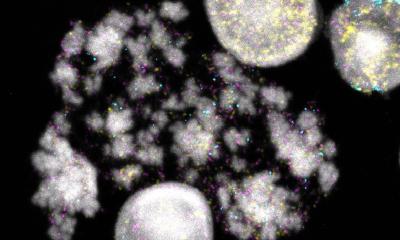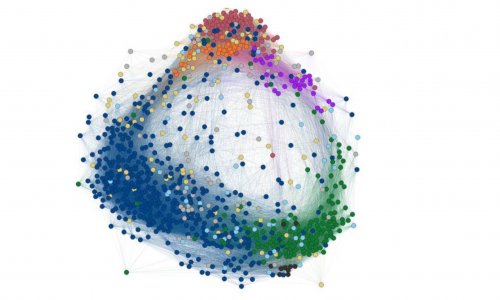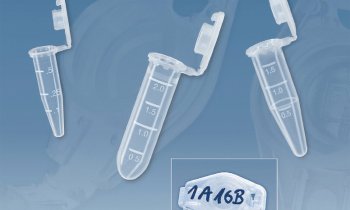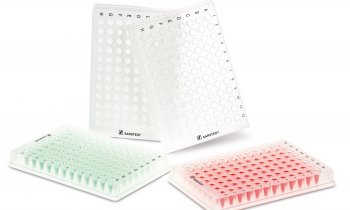© Simon Braun
News • Chromatin remodeling
New protein targets for cancer treatments
Cells depend on the precise reading of DNA sequences to function correctly. This process, known as gene expression, determines which genetic instructions are activated.
When this fails, the wrong parts of the genome can be activated, leading to cancers and neurodevelopmental disorders. Scientists at the University of Geneva (UNIGE) have identified two proteins that play a key role in regulating this essential mechanism, paving the way for promising new treatments that could be more effective and less toxic than those currently available. Their findings are published in Nature Communications.

© UNIGE
Human DNA contains over 20,000 genes and would stretch nearly two metres if fully uncoiled. To fit this enormous amount of information into a tiny space within a cell — just 10 to 100 micrometres in diameter — it must be tightly compacted. This is the job of chromatin, a complex of proteins that packages and condenses DNA within the cell nucleus. However, in this condensed form, the DNA is unreadable and therefore inactive. Other proteins are needed to remodel chromatin, allowing access to specific DNA sequences at the right time and place, so the cell can read the genetic instructions that determine its function within the body.
“These two proteins could become promising therapeutic targets for diseases linked to disrupted chromatin remodelling — and potentially offer treatments that are less toxic than current options,” says Simon Braun, assistant professor in the Department of Genetic Medicine and Development at the UNIGE Faculty of Medicine.
This epigenetic mechanism — the regulation of gene expression — can sometimes go awry. When the wrong region of DNA is opened, it can disrupt the cell’s identity — in other words, its function. “This is what we observe in skin cells, for example,” explains the expert. “If inappropriate regions of chromatin are exposed, parts of the genome that promote abnormal cell growth can become active, potentially leading to skin cancer. If this dysregulation occurs in developing neurons, it may also contribute to neurological disorders such as autism.”

© UNIGE
Thanks to recent research, Simon Braun and his team have identified two proteins — MLF2 and RBM15 — that regulate chromatin remodelling. “This is a first,” says Hanna Schwämmle, a doctoral student in the Department of Genetic Medicine and Development at the UNIGE Faculty of Medicine and first author of the study. “Our findings suggest that these two modulators could become promising therapeutic targets for diseases linked to disrupted chromatin remodelling — and potentially offer treatments that are less toxic than current options.”
To identify these two proteins, the scientists used the CRISPR-Cas9 screening method. This revolutionary gene-editing tool, developed by two researchers — one French and one American — in 2012, allows genes to be modified or inactivated, revealing their role within the cell. Over 20,000 genes were analysed before the two key genes, coding for the MLF2 and RBM15 proteins, were identified. The entire experiment was conducted at UNIGE.
“The next step will be to assess whether targeting MLF2 and RBM15 can kill cancer cells or merely slow their growth. In the longer term, the goal is to identify the most effective molecules to correct chromatin remodelling dysfunctions,” concludes Simon Braun.
Source: University of Geneva
25.06.2025











